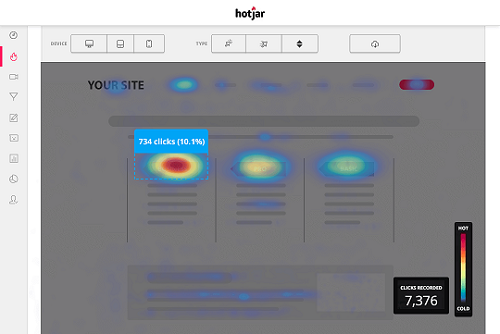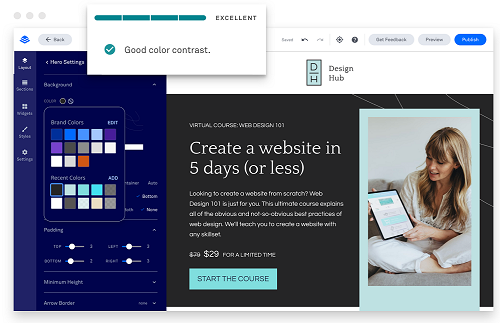The Role Of Social Media In Sales Conversion: An Analysis
With Social Media, You Get What You Pay For
Perhaps the question most asked by businesses looking to get more deeply involved in social media is ‘what am I paying for?’ The extensive history of study on the effects of various aspects of traditional media marketing means that, in comparison, investing in social media can seem a little like shooting in the dark. The role of television, for example, in introducing a wide base of potential customers to your product is well-documented, just as email has been established as an effective way of maintaining client awareness of your brand.Part of the issue with social media lies in the tendency of inexperienced businesses to see it as a single conglomerate block, whereas in fact each of the varied platforms can play highly differing roles depending on what stage of customer engagement your brand is looking to focus on.
A new report by Aol Platforms brings hard data to two very important questions: which social network is right for your business, and is paid advertising a worthwhile investment when free exposure is so readily available?
The report identifies four distinct points along a customer’s purchase path around which the data analysis is based:
First: the first point at which the customer is introduced to the product.
Middle: a customer’s continued exposure to a product. Not usually the point at which a sale is closed, but vital for maintaining brand awareness.
Last: the last channel which a customer was exposed to before making a purchase.
Only: a particular case in which conversion to sale happens through a single point of contact.
Aol Platforms’ research involved investigating which social media channels were most prominent at each stage of these paths to purchase, determining where each platform fell in the ‘sales funnel’. What they found, perhaps unsurprisingly to those familiar with the ways in which different platforms operate, was that different social media sites were weighted towards different stages of the path to purchase.
First: the first point at which the customer is introduced to the product.
Middle: a customer’s continued exposure to a product. Not usually the point at which a sale is closed, but vital for maintaining brand awareness.
Last: the last channel which a customer was exposed to before making a purchase.
Only: a particular case in which conversion to sale happens through a single point of contact.
Aol Platforms’ research involved investigating which social media channels were most prominent at each stage of these paths to purchase, determining where each platform fell in the ‘sales funnel’. What they found, perhaps unsurprisingly to those familiar with the ways in which different platforms operate, was that different social media sites were weighted towards different stages of the path to purchase.
The data shows that across all platforms YouTube was the strongest at both introducing customers to new products and driving conversions to sales, at 18% and 14% respectively. It also showed the highest proportion of customers for whom it was the only point of contact before conversion, also at 14%.
At the other end of the scale, Twitter was weak at introducing customers to products and at closing sales, but was by far the strongest at maintaining brand awareness – 92% of visitors to the site fell in the ‘middle’ category of the sales funnel.
Facebook, as might be expected of the largest social network, had the broadest spread. It was the first point of contact for 11% of customers, held a conversion rate of 10%, and held 69% of visitors in the middle.
What the research also showed was how vital paid engagement with social networks is alongside organic reach – of which there has been some talk recently. On Twitter especially, monetary investment (in the form of promoted tweets) led to a jump in the conversion rate from 4% to 12%. Even more dramatically, it meant that the proportion of customers in the ‘only’ stage of the sale funnel – those who moved straight encountering the product to purchasing it – leapt from 1% to 30%.
Pinterest is an interesting case. While paid engagement with the site led to an increase in new customer acquisitions from 5% to 26%, the increase in the proportion of those in the ‘last’ section of the sales funnel increased by only a single percentage point, to 9%. Since Pinterest is already the largest driver of traffic to commercial sites, this suggests that it is already structured so as to optimise the buying potential of its visitors and paid content will do little to alter this.
What this research shows is that social media is a powerful but complex tool for both gaining new customers and for converting sales. As far as organic engagement goes, its main strength lies in establishing and maintaining brand identity and contact with consumers. For those willing to invest, however, it can pay dividends across the spectrum.
Douglas is an English Literature graduate who has written about everything from music to food to theatre, now a content creator for Social Media Frontiers. No topic too large or too small. Follow him @DouglasAtSMF.
Contact us on Twitter, on Facebook, or leave your comments below. To find out about social media training or management why not take a look at our website for more info http://socialmediacambridge.co.uk/.
The Role Of Social Media In Sales Conversion: An Analysis
![]() Reviewed by Anonymous
on
Tuesday, September 09, 2014
Rating:
Reviewed by Anonymous
on
Tuesday, September 09, 2014
Rating:














 Entrepreneur, international speaker on Social Media Marketing. First one in the UK to write and speak in conferences about Twitter as a marketing tool. Consultant to Corporate Companies, Government Organizations, Marketing Managers and Business Owners.
Entrepreneur, international speaker on Social Media Marketing. First one in the UK to write and speak in conferences about Twitter as a marketing tool. Consultant to Corporate Companies, Government Organizations, Marketing Managers and Business Owners. Aspiring novelist with a passion for fantasy and crime thrillers. He hopes to one day drop that 'aspiring' prefix. He started as a writer and soon after he was made Executive Editor and Manager of the team at Social Songbird. A position he held for 5 years.
Aspiring novelist with a passion for fantasy and crime thrillers. He hopes to one day drop that 'aspiring' prefix. He started as a writer and soon after he was made Executive Editor and Manager of the team at Social Songbird. A position he held for 5 years. Musician, audio technician, professional tutor and a Cambridge university English student. Interested in writing, politics and obsessed with reading.
Musician, audio technician, professional tutor and a Cambridge university English student. Interested in writing, politics and obsessed with reading. Recently graduated with a BA in English Literature from the University of Exeter, and he is about to study an MA in Journalism at the University of Sheffield. He is an aspiring journalist and novelist; in his free time he enjoys playing chess, listening to music and taking long walks through nature.
Recently graduated with a BA in English Literature from the University of Exeter, and he is about to study an MA in Journalism at the University of Sheffield. He is an aspiring journalist and novelist; in his free time he enjoys playing chess, listening to music and taking long walks through nature. Lucy is an undergraduate BSc Politics and International Relations student at the London School of Economics and Political Science.
Lucy is an undergraduate BSc Politics and International Relations student at the London School of Economics and Political Science. Anna Coopey is a 4th year UG student in Classics at the University of St Andrews in Scotland. She is a keen writer and researcher on a number of topics, varying from Modern Greek literature to revolutionary theory.
Anna Coopey is a 4th year UG student in Classics at the University of St Andrews in Scotland. She is a keen writer and researcher on a number of topics, varying from Modern Greek literature to revolutionary theory.
